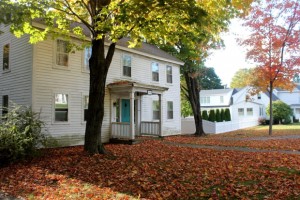The Greater Boston Housing Report Card 2015 is out, and it’s an eye-opener. Prepared for the Boston Foundation by the Dukakis Center for Urban and Regional Policy at Northeastern University, it’s a detailed analysis of Massachusetts’ housing-unaffordability crisis –a crisis that results, in part, from not enough housing being produced. What accounts for the insufficiency?
“We have failed to meet housing production targets because there is no way to do so given the high cost of producing housing for working and middle-income households.”
That’s from the executive summary, which goes on to make the same point in another way:
“(T)he cost of developing new housing for working and middle-income households has become prohibitive in Massachusetts. Radical remedies will be needed to overcome the barriers to housing production …”
And what are the barriers? High development costs, of course ($274 per square foot for urban projects, of which $159 is construction and $41 is land acquisition). And zoning regulations that limit density and where multi-family projects can be built.
Now, you might be thinking, what does any of this have to do with us, up here in our little, rural, unprepossessing state? Metro Boston is another world — far pricier and denser than any place around here.
Well, we’d argue that the problems that Massachusetts is facing are problems we share — albeit on a smaller scale. And remember, Massachusetts has an affordable housing zoning law (Chapter 40B) that’s arguably stronger than what’s on Vermont’s books.
Yes, it would be nice if we could get a comparable report card for housing in Vermont, but failing that, perhaps we can learn something from what the one for Massachusetts.
The report notes that “Although there is a lot of vacant land, most vacant sites are not zoned for multi-family residential development.”
As for zoning:
“Highly restrictive zoning, present in virtually every one of the state’s 351 municipalities, creates an artificially high barrier to development. It pushes developers to propose smaller projects (i.e., fewer units) and smaller units (i.e., fewer bedrooms per unit) in order to reduce the perceived impact on the neighborhoods and — in the case of larger units attractive to families with school-age children — the perceived impact on the town or city’s education budget. The complexity of getting zoning changes approved dramatically extends the development period and increases carrying and soft costs. The cumulative effect drives up both the cost of development (seen in the high level of site costs, financing, and soft costs) and rents.
“Thus, significant resistance to any change in the local community ambience has also meant that local support has heavily favored low-density, smaller projects, both of which are far more expensive to produce. Higher density housing maximizes the efficiency of land use, and larger projects create economies of scale in development and construction. Massachusetts residents opposed to zoning for multi-family housing at 20 units per acre are astounded to learn that the city of Paris — a pretty nice place to live with undeniable “character” — has a density of approximately 120 units per acre!
“When developers are given permission only to build projects of very low density, they will do so. As a result, the housing that is built will be expensive and affordable only for the very well-to-do or, if public subsidies are involved, to people with very low incomes. Working and moderate-income families will not be able to afford these units. This state of affairs, of course, causes the average cost of producing multifamily housing in the Commonwealth to increase.”
Here we note that merely increasing the housing supply (as some are advocating) isn’t going to solve the affordability problem if the added supply happens to be … luxury-scale and thus … unaffordable to all but the wealthy.